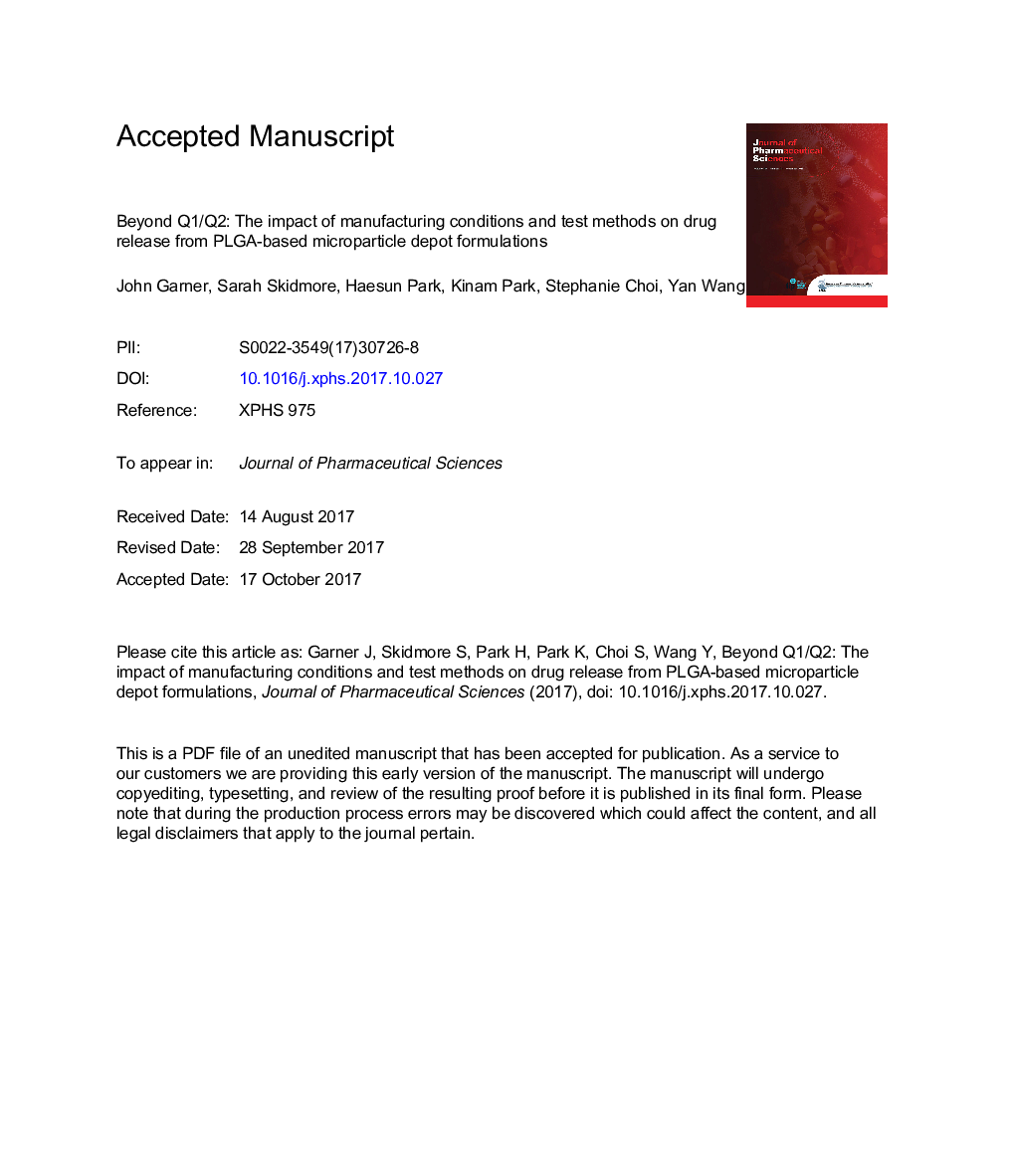| کد مقاله | کد نشریه | سال انتشار | مقاله انگلیسی | نسخه تمام متن |
|---|---|---|---|---|
| 8513627 | 1556497 | 2018 | 29 صفحه PDF | دانلود رایگان |
عنوان انگلیسی مقاله ISI
Beyond Q1/Q2: The Impact of Manufacturing Conditions and Test Methods on Drug Release From PLGA-Based Microparticle Depot Formulations
دانلود مقاله + سفارش ترجمه
دانلود مقاله ISI انگلیسی
رایگان برای ایرانیان
موضوعات مرتبط
علوم پزشکی و سلامت
داروسازی، سم شناسی و علوم دارویی
اکتشاف دارویی
پیش نمایش صفحه اول مقاله

چکیده انگلیسی
Drug-loaded polymeric microparticles have been used as long-acting injectable (LAI) depot formulations. To obtain U.S. Food and Drug Administration approval, a generic LAI depot product needs to be qualitatively (Q1) and quantitatively (Q2) the same in terms of inactive ingredients as its reference-listed drug. However, Q1/Q2 sameness as the reference-listed drug does not guarantee the same in vitro drug release profile and in vivo performance, especially when the manufacturing methods are different. There is little consensus on how the in vitro testing needs to be done to examine the release profiles of LAI depot formulations. This study examined the manufacturing differences in making risperidone-loaded poly(lactide-co-glycolide) microparticles and their impact on the release kinetics. It also examined the impacts of in vitro testing methods on the drug release profiles. Two in-house manufactured risperidone poly(lactide-co-glycolide) microparticles and Risperdal Consta® were used in the study. Of the in vitro release methods tested, the orbital agitation method provided the most reproducible release profiles. The results indicate that the in vitro release kinetics depend not only on manufacturing procedures but also on the in vitro testing conditions, such as the agitation speed, vessel-dimensions, solid beads, media exchange volume, and other parameters both under real-time and accelerated testing conditions. In the current case, the in vitro experimental condition seemed to affect the drug release kinetics more than the manufacturing differences. The developed orbital agitation release testing method is simple, robust, and reproducible, which allows the comparison of in vitro release profiles of formulations that are prepared with manufacturing differences.
ناشر
Database: Elsevier - ScienceDirect (ساینس دایرکت)
Journal: Journal of Pharmaceutical Sciences - Volume 107, Issue 1, January 2018, Pages 353-361
Journal: Journal of Pharmaceutical Sciences - Volume 107, Issue 1, January 2018, Pages 353-361
نویسندگان
John Garner, Sarah Skidmore, Haesun Park, Kinam Park, Stephanie Choi, Yan Wang,